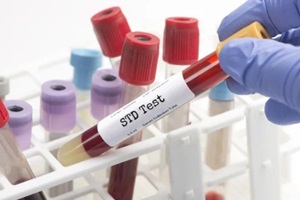 The statistics on unintended pregnancy rates and contraceptive use paint a concerning picture in the United States. Nearly half of all pregnancies are unintended, and the rates are significantly higher among low-income and minority women.
The statistics on unintended pregnancy rates and contraceptive use paint a concerning picture in the United States. Nearly half of all pregnancies are unintended, and the rates are significantly higher among low-income and minority women.
This points to significant barriers that prevent women from obtaining affordable contraceptives or using them effectively. Comprehensive access to contraceptive care is essential preventive care for women’s health.
By removing obstacles around affordability, knowledge, legal restrictions, insurance coverage, and access, all women can fulfill their right to determine if and when to have children.
Barriers Limiting Access and Affordability
Several complex barriers currently limit many women’s ability to access affordable contraceptive care. Examining and addressing each of these obstacles is essential.
Lack of Knowledge and Information
One major barrier is a lack of medically accurate, comprehensive information and education about contraceptive methods.
Abstinence-only approaches have been ineffective in delaying sexual activity or promoting safer behaviors. In contrast, fact-based sex education programs positively impact outcomes among young people.
However, restrictions often limit access to complete information. Knowledge gaps and misconceptions about safety and effectiveness persist among the broader population.
For example, prevalent myths that birth control pills cause health problems or that IUDs have high infection risks may deter use. Factual education for both patients and providers facilitates informed contraceptive choices.
Legal and Policy Restrictions
Unfavorable legal rulings and restrictive state and federal policies also impede access. The Supreme Court’s Hobby Lobby decision enables more employers to exclude contraceptive coverage based on religious grounds.
State measures requiring parental consent for minors, defining fertilized eggs as “persons,” or weakening contraceptive equity measures also threaten access.
These restrictions disproportionately affect disadvantaged groups, limiting affordable care. Advocacy to uphold equitable coverage mandates and evidence-based policies is paramount.
Prohibitive Costs and Insurance Barriers
Cost and insurance pose additional barriers, especially for low-income and uninsured women. More than half of women requiring contraceptive services rely on publicly funded sources, which struggle with rising demand and underfunding.
The Affordable Care Act’s contraceptive provision would lower millions of Americans’ out-of-pocket expenses by covering FDA-approved methods without copays or deductibles. However, many non-compliant employers and insurance plans still impose high cost-sharing.
Extending comprehensive Medicaid family planning services in every state provides a pathway to affordable care for economically disadvantaged women.
Refusals to Provide Contraception
Conscience-based objections create substantial access barriers across Catholic hospital systems, pharmacies, and other care settings nationwide. This results in referral delays or coverage gaps, especially in rural locations that lack alternatives, jeopardizing timely care.
Although ethical exemptions aim to protect the diversity of beliefs, refusal laws should mandate timely referrals and preserve patient access. As religious facility mergers continue, proactive advocacy preserves community contraceptive services.
Strategies for Improving Access and Affordability
While substantial barriers stand in the way, evidence-based strategies also exist to expand affordable access to contraception effectively.
Complying With Contraceptive Coverage Requirements
 Full compliance with the ACA’s contraceptive provision enables significant progress by eliminating prohibitive out-of-pocket expenses that deter the use of more reliable methods.
Full compliance with the ACA’s contraceptive provision enables significant progress by eliminating prohibitive out-of-pocket expenses that deter the use of more reliable methods.
Expanding alternative benefit pathways through Medicaid family planning waivers also connects uninsured individuals with coverage.
Targeted implementation assistance helps newly covered entities meet standards. Supporting Title X and other public funding is equally vital to serve those remaining uninsured under the law.
Confidential Adolescent Services
Preserving confidential services, insurance privacy protections, and consent policies enables adolescents to access care.
Communication with parents or guardians is encouraged as appropriate, but barriers requiring parental involvement should not obstruct access to needed contraception.
Increasing Insurance Supply Dispensing Policies
Extending dispensing limits from single cycles to 12-month supplies improves continuation rates across contraceptive methods.
Updating restrictive formularies also ends improper “fail-first” tiering policies that impede patient choice.
Enabling over-the-counter access further eases barriers, provided accompanying insurance coverage or savings programs keep oral contraceptives affordable.
Same-Day Access to Quick Start Methods
Streamlining initiation by offering same-day device insertion, injection, or oral contraceptive starts during existing visits improves convenience and saves additional travel burdens. Appropriate provider compensation and billing structures support such quick-start models.
Postpartum and Post-Abortion Contraceptive Access
Implementing immediate postpartum long-acting reversible contraception (LARC) insertion during hospitalization after delivery maximizes opportunities when women have existing coverage.
Despite global maternal care bundled payments, Medicare and Medicaid payment models should enable separate cost coverage for LARC devices. Likewise, ensuring comprehensive contraception is seamlessly available during abortion visits reduces gaps in care.
Reduce Sterilization Barriers
Informed consent requirements aim to protect patient rights but pose obstacles to desired postpartum tubal ligations.
Revising outdated restrictions affecting low-income sterilization candidates covered through Medicaid and other government insurance plans establishes equitable access.
Reach the Most Vulnerable Populations
Targeting disadvantaged minority and low-income groups with higher unintended pregnancy rates is paramount, as financial barriers multiply access challenges. Culturally competent education and outreach through trusted local partners make services more approachable and relevant.
Take Charge of Your Family Planning Journey with Raleigh Gynecology & Wellness
 Addressing the barriers limiting access and affordability necessitates collaboration between all stakeholders – patients, providers, policymakers, and diverse community partners.
Addressing the barriers limiting access and affordability necessitates collaboration between all stakeholders – patients, providers, policymakers, and diverse community partners.
Achieving comprehensive contraceptive care as vital preventive coverage for all women is contingent on dismantling obstacles related to knowledge gaps, high costs, restrictive policies, and systemic roadblocks.
Early investments to establish equitable access create invaluable societal benefits and economic returns that compound across generations.
Everyone has a stake in securing these vital services to support women, families, and healthy communities. Raleigh Gynecology & Wellness provides personalized guidance to ensure contraceptive care options fit your needs and circumstances.
Contact us today at (919) 636-6670 or schedule an online consultation to take charge of your family planning journey.

 When it comes to
When it comes to  Family history of blood clots, strokes, cancers, or other hereditary conditions
Family history of blood clots, strokes, cancers, or other hereditary conditions Hormonal changes from birth control could negatively (or positively) affect your libido and sexual satisfaction as well. Conditions including endometriosis or polycystic ovarian syndrome also influence contraceptive method selection.
Hormonal changes from birth control could negatively (or positively) affect your libido and sexual satisfaction as well. Conditions including endometriosis or polycystic ovarian syndrome also influence contraceptive method selection.
 Changes in menstrual flow and duration: It is common to experience lighter, predictable periods on hormonal birth control. Heavier or prolonged bleeding may indicate an underlying problem.
Changes in menstrual flow and duration: It is common to experience lighter, predictable periods on hormonal birth control. Heavier or prolonged bleeding may indicate an underlying problem.
 Almost
Almost  In addition to spacing births, contraceptive care offers non-contraceptive health benefits. Hormonal birth control methods can treat several conditions unrelated to pregnancy prevention.
In addition to spacing births, contraceptive care offers non-contraceptive health benefits. Hormonal birth control methods can treat several conditions unrelated to pregnancy prevention. Contraceptive care offers women empowerment over their
Contraceptive care offers women empowerment over their  As
As  When determining if pursuing an IUD feels right for your needs, having an attentive ear to listen thoughtfully and a knowledgeable voice to answer all your questions is key.
When determining if pursuing an IUD feels right for your needs, having an attentive ear to listen thoughtfully and a knowledgeable voice to answer all your questions is key.